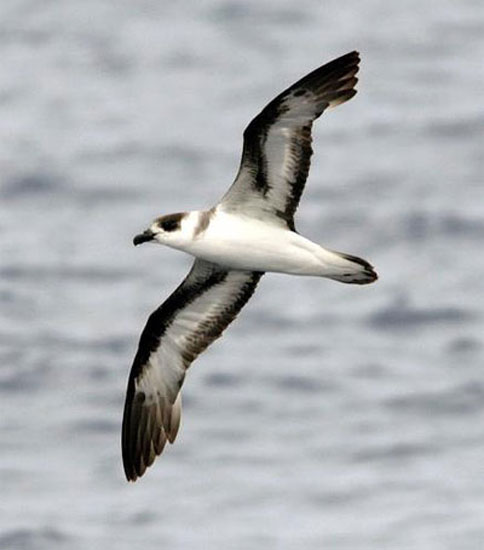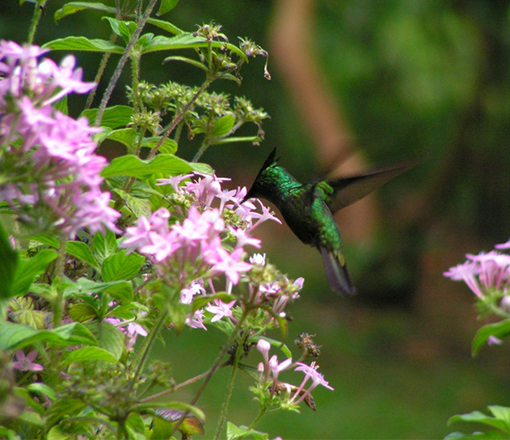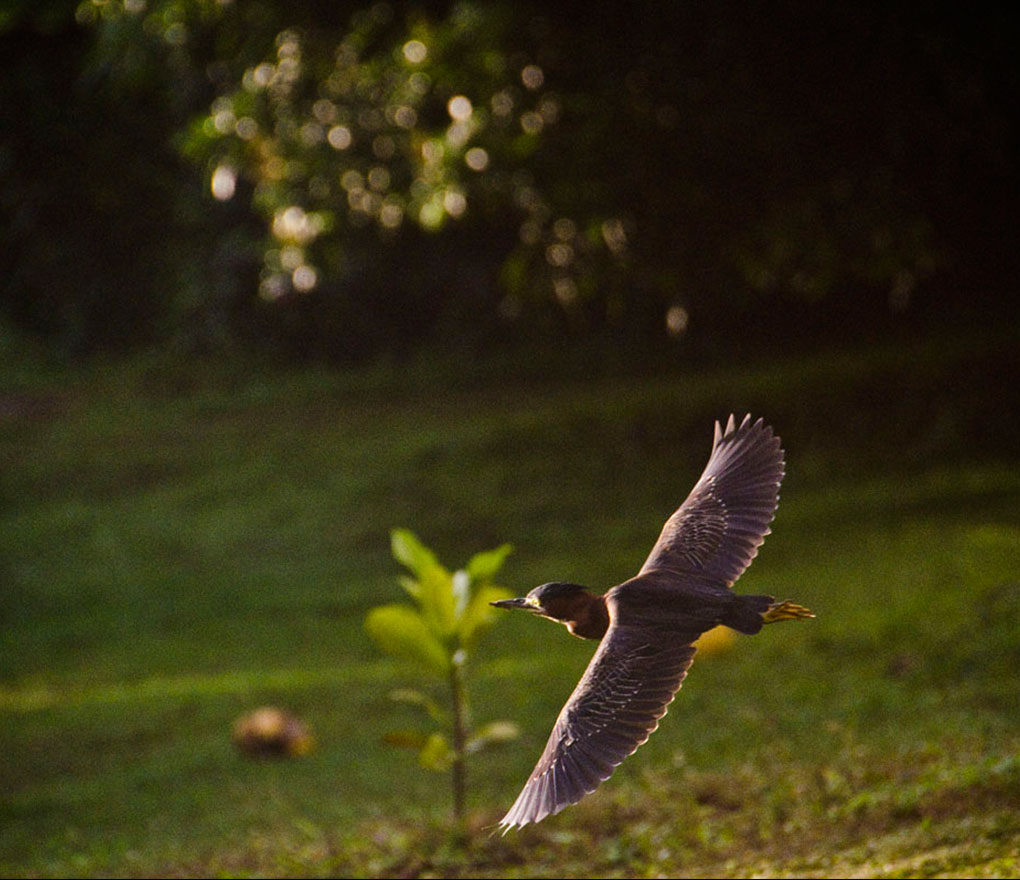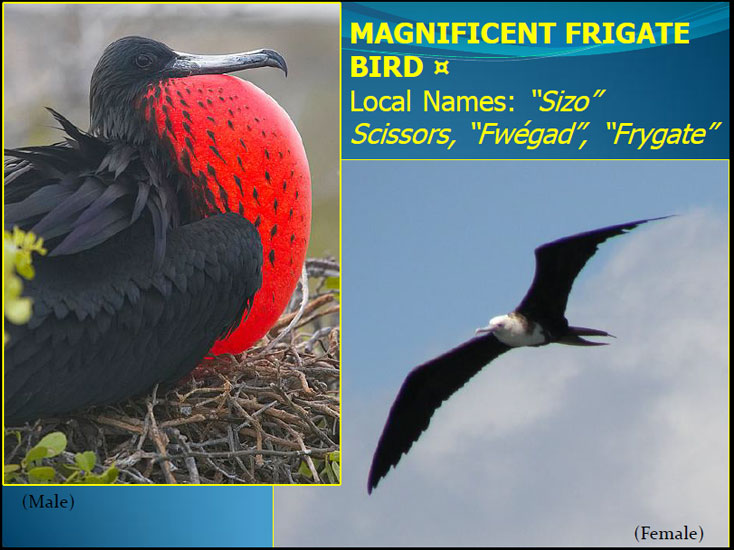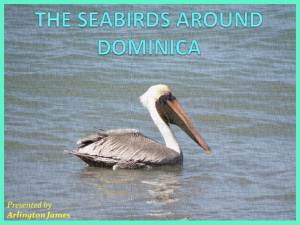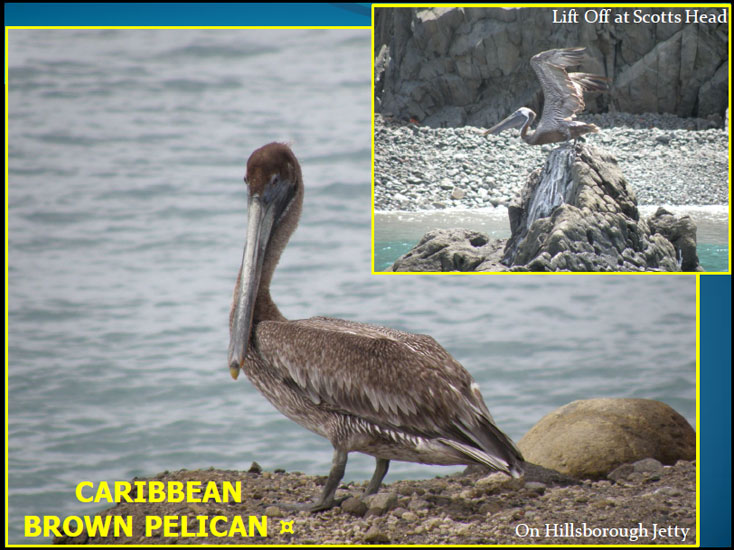Dominica’s natural charms make her a perfect place for bird watching. Her rugged but lush high mountain terrain gives way to tropical forest, gently sloping downward to bush and drier savannes, before dropping to the shoreline.
This great variety of habitat allows for a wide diversity of birds within a relatively short distance. After all, to go from the top of Dominica’s tallest mountain (4,747 ft. Morne Diablotin) down to the sea is just a few miles as the crow flies!
Dominica has 167 recorded species of birds, although our resident expert Bertrand Jno Baptiste has sighted 171!
Below are a few of the birds who call Dominica home. This section will continue to grow as we are able to photograph our quick-winged friends!
Read more about the Bird’s of Dominica in Important Bird areas of Dominica (PDF) by Stephen Durand and Bertrand Jno Baptiste (published by Forestry Wildlife & Parks Division).
Bird Watching & Birding Tours
Bird-watching can take place anywhere in Dominica. You may have some great sightings right from the verandah of your guest house!
In the northwest, Syndicate is well-known for bird-watching, especially for seeing our parrots. In the Roseau Valley, try Papillote Wilderness Retreat for a wonderful garden & bird-watching experience. Twenty-seven species of birds, including hawks, herons and hummingbirds, and 19 different kinds of butterflies, can be spotted on its 14 acres of rainforest gardens. Garden tours will introduce you to an extensive collection of orchids, begonias, gingers, heliconias and fruit trees. Many of the birds and flowers can be admired as you sip a cooling drink on the terrace of the Rainforest Restaurant.
For those who want to learn more about Dominica’s birds through guided field trips, Bird-Watching Tours are offered by many hotels and tour guides:
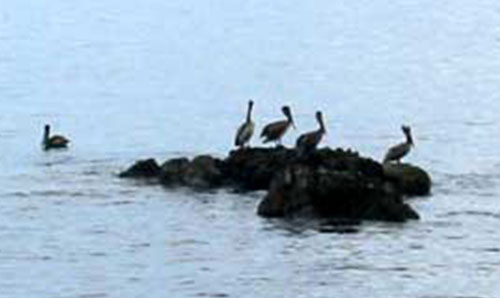
Interesting Sites
BirdLife International: Detailed report of Dominica’s birds… read more
Fatbirder: Provides useful resources, links and information about birding in Dominica… read more
Rare Species Conservatory Foundation: Since 1997, RSCF and Dominica’s government have partnered to research and conserve Dominica’s parrots… read more.
Birds Caribbean: a nonprofit membership organization working to conserve the birds of the Caribbean and their habitats… read more.
ebird Caribbean: Online checklist program for birding run by the Cornell Lab of Ornithology and National Audubon Society… read more.
Avibase: World bird database – Dominica
Can you identify the species of bird?
In the sound clip above, masses of birds came to feed on the insects attracted to the fruit of a Mo Bins or Hogplum tree (Spondias mombin).
Bird Species
Parrots
The most famous birds of Dominica are the parrots – the Sisserou (Imperial) and the Jaco (Red Necked). The Sisserou Parrot is the National Bird and proudly adorns Dominica’s flag. Our parrots live mainly in the northern part of the island and are protected. A breeding program has been in place for several years and has helped the population to recover; parrots are now spreading further south. The Parrot Research Centre located in the Botanical Gardens in Roseau strives to preserve these birds and to educate people about them.
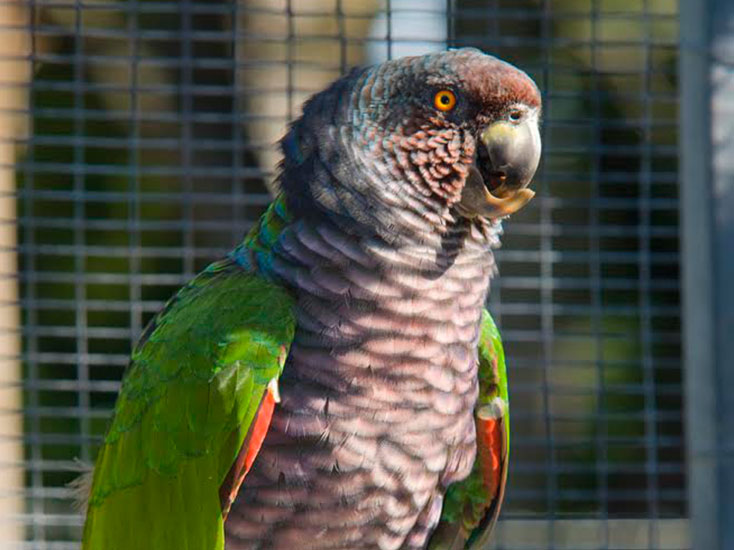
Dominica’s endemic Sisserou Parrot or Imperial Parrot, Amazona imperialis
Sisserou (Amazona imerialis)
The adult Sisserou (Amazona imerialis) is 18 – 20 inches long and weighs 2 pounds. Their wingspan is around 30 inches. The upper parts and back are mostly green with greenish blue head. There is a red streak on the wing-tips. Parrots pair themselves off for life. They have been known to live to be 70 years old.
Imperial parrot at the Botanical Gardens in Dominica
youtube user: Alvindominica
First Captive-bred Imperial Parrot (Amazona imperialis)
youtube user: Rare Species Conservatory Foundation
Looking for great places to go birding? Find out more about our National Parks, Mountains, and Beaches.
Jaco (Amazona arausiaca)
The Red-necked or Jaco/Jacquot parrot (Amazona arausiaca) is smaller than the Imperial and can be found at lower elevations than the Imperial. The area of Syndicate in the Dominica’s Northern Forest Reserve is perhaps the best known spot to see these two spectacular birds.
More Birds
Other species of note are the Broad-winged Hawk (Buteo platypterus), frequently seen soaring in wooded areas. Extremely common are various species of hummingbird, of which the Purple-throated Carib(Eulampis jugularis) can often be seen darting among flowers. Frequently seen soaring high above the sea near shore is the Magnificent Frigatebird (Fregata magnificens). Two species of bird are heard more often than seen: Locally known as the Siffleur Montagne (Mountain Whistler), the Rufous-throated Solitaire (Myadestes genibarbis) is a bird of the higher-elevation forest. You’ll usually hear one on the way to the Boiling Lake, Freshwater Lake, Boeri Lake or any other hike in the higher elevations. The Barn Owl, as the most widely distributed bird in the world, can of course be heard if not seen, during nighttime in Dominica.
Did you Know?
The Siffleur Montange commonly heard in the forests all over Dominica, is rarely seen. But in local folklore if you manage to catch a glimpse – it is considered to be sign of good fortune.
Antillean Crested Hummingbird (orthorhyncus cristatus) Male: green above, the tail and underparts blackish, conspicuous crest. Widespread from mountain forest to sea level but most abundant in lowlands.
Purple Throated Carib Hummingbird (eulampis jugularis) Description: A sturdy, very dark hummingbird. Plumage largely black; gorge purplish red; tail and upper tail-coverts bluish green; wings metallic green. Sexes similar. At times appears entirely black in the field, but the green wings are usually conspicuous (other hummingbirds have blackish wings).
Little Green Heron (Butorides virescens) Found in swampy or damp areas, the Green Heron is often sighted along rivers and in the wetter parts of the island. They feed on insects, rodents, fish, frogs and crustaceans. The Great Blue Heron is also common in Dominica. It looks similar, but has a longer neck and blue/gray colouring on neck and wings.
Lesser Antillean Flycatcher (Myiarchus oberi) Male: green above, the tail and underparts blackish, conspicuous crest. Widespread from mountain forest to sea level but most abundant in lowlands.
Sea birds

Sea Birds Common to Dominica
- Magnificent Frigate Bird – Local Names: “Sizo” Scissors, “Fwégad”, “Frygate”
- White-tailed Tropicbird – “Palantji”, “Tareau”
- Brown Booby – “Balaw Bird”
- Brown Noddy
- Lesser Black-backed Gull
- Caribbean Brown Pelican
- Royal Tern
- Least Tern
- Laughing Gull
- Bridled Tern
- Sooty Tern
Sea Bird Facts
- Some are excellent swimmers and divers;
- Live longer, breed later and have fewer young than other birds;
- Most species nest in colonies;
- Guide fishermen to shoals of fish, e.g. in Dominica the Brown Booby is named “Balaw Bird” by fishermen from Layou.
Some other types of birds also seen during a boat trip to Pointe des Foux include:
- Scaly-naped Pigeon or Rammier
- Yellow-crowned Night Heron or “Kwabyé jenga”
- Zenaida Dove orToutwèl
- Broad-winged Hawk or “Malfini”, Chicken Hawk
- Osprey or “Fish Hawk”, “Malfini lamè”
- Caribbean Martin or Jiwondèl
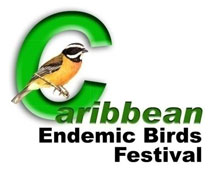 Caribbean Endemic Bird Festival Each year, during this boat trip to Pointe des Foux, a known nesting area for some of Dominica’s sea birds, many marine birds and marine creatures are often spotted. Arlington James has put together a presentation aimed at educating those on the trip and he has kindly agreed to let us share it with you. Read on for some brief information about Dominica’s Sea Birds, then download the presentation (in PDF format).
Caribbean Endemic Bird Festival Each year, during this boat trip to Pointe des Foux, a known nesting area for some of Dominica’s sea birds, many marine birds and marine creatures are often spotted. Arlington James has put together a presentation aimed at educating those on the trip and he has kindly agreed to let us share it with you. Read on for some brief information about Dominica’s Sea Birds, then download the presentation (in PDF format).
You can download the PDF here.
Thanks to Arlington James for providing the Seabirds of Dominica Presentation.
Brown Pelican (pelecanus occidentalis) Description: Readily identified by its large size and characteristic features. Unlike other sea birds the neck is not extended in flight, the head being drawn back on to the shoulders. Coloration largely dark brown, the upperparts mostly silver grey; upper part of head and stripe down neck white, the neck entirely white during post-nuptial moult. Young have the head, neck and upperparts brownish, the underparts mostly white. Either solitary or associated in small flocks, when usually seen flying in oblique single file close to the surface of the sea. In normal flight a few wing beats are followed by a glide, but both Brown and White Pelicans occasionally soar high in the air.
A seabird you are NOT likely to see is the Black-capped Petrel, also known as Diablotin – the namesake to two of Dominica’s mountains. Morne Diablotins and Morne Aux Diable. This bird was believed to be extinct due to hunting and habitat disruption. However, a recent study found that some do indeed still exist! Read the article here.
